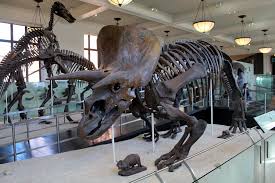Is it truly possible to resurrect an extinct species back into the world?
Surprisingly, scientists have already made progress in making such a thing a reality. Through modern technology and the present understanding of genetics, species thought to be gone forever may actually make a comeback. But why bother bringing back these animals?
Well, for one thing, certain extinct species may help restore natural biodiversity in the ecosystems they used to inhabit. For example, mammoths were responsible for helping in the development of the Arctic grasslands (mostly through clearing trees and spreading seeds of plants). When the mammoth went extinct, those grasslands slowly converted to the icy tundra we see today. Bringing back the woolly mammoth from extinction would help restore that environment. Scientists believe that by bringing back species who’ve been gone, they can successfully restore that ecosystem as niches are filled.
But how does de-extinction work? Can you actually bring back the exact species that died out years ago?
Well not quite. It’s nearly impossible to bring back the exact species that is gone. So scientists have to make do with what is presently available. What that essentially means is tracing back the extinct species to its closest living relative in a process called backbreeding. For the woolly mammoth, this might mean looking at the very similar Asian elephant and finding certain elephants with traits similar to the mammoth. Over time, scientists would breed these elephants to eventually get an Asian elephant that looks and behaves like the mammoth. This isn’t necessarily bringing back the exact same species, but instead working to develop a subset of a similar species that is an imitation. This sort of off-brand woolly mammoth would fill the same job in an ecosystem that the woolly mammoth would have, helping to restore an environment back to its former glory.
Of course, there are other methods to de-extinction, but I think we’re not acknowledging the elephant in the room.
Wouldn’t this sort of be messing with the natural order of things on earth? Is it really ethical to recreate a species that we drove to extinction?




